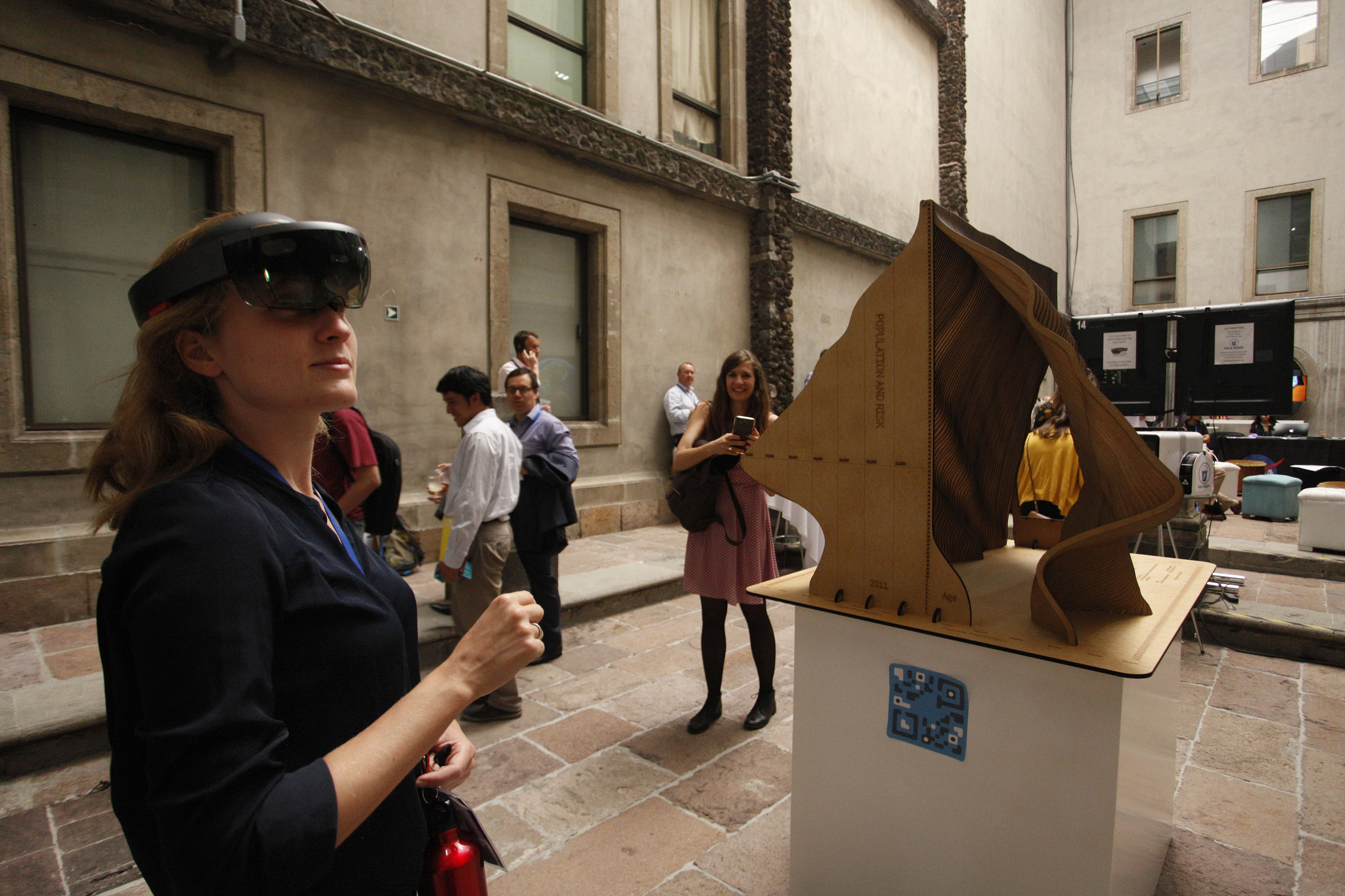By Devan Kreisberg
Drones that carry blood samples. Artificial intelligence (AI) that helps prioritize rescue operations. Communication methods that bypass humans' error-prone cognitive processes. And a cameo by a Mexican celebrity.
No, this wasn't the newest sci-fi blockbuster. It was the 2018 Understanding Risk Forum (UR2018), held last month in Mexico City. Drones, AI, and cognitive bias were just a few of the topics discussed by the more than 1,000 participants. The famous celebrity was Frida the rescue dog, who has become a symbol of hope in Mexico and around the world following the earthquakes that affected Mexico City last September.

Frida the Rescue Dog was introduced and honored at the Understanding Risk 2018 opening ceremony. (GFDRR)
Understanding Risk (UR), supported by the Global Facility for Disaster Reduction and Recovery (GFDRR), brings together an open, global community of 8,000 disaster risk management (DRM) experts and practitioners. UR community members – scientists, technologists, policy makers, private-sector representatives, academics, and civil-society organizers – convene every other year at UR Forums. Together, they discuss the latest tools and innovative approaches for collecting, communicating and using risk information.
These tools and approaches have value beyond disaster risk management (DRM). Development experts and practitioners around the world can use them to support resilient and smart investments. UR2018 placed special focus on risk communication and disruptive technologies, topics that have broad applications. The understanding of risk is the foundation for effective disaster risk management, which affects projects on every content and in every sector; and risk assessments that are communicated effectively help incorporate good DRM practice into development projects.
The UR community is focusing more and more on accelerating the transition from producing risk information to communicating and using it. This year, the UR Forum abounded with innovative ways to talk about risk and inspire action:
- The Red Cross Red Crescent Climate Centre hosted a technical session on why people make irrational decisions even when they know the risks.
- The new Return Period Calculator launched by GFDRR's Innovation Lab can help anyone quickly understand the likelihood of experiencing a "100-year flood" in any year.
- A new GFDRR report, Aftershocks: Remodeling the Past for a Resilient Future, draws from science, art, and history to convey how past disasters would affect our modern world if they occurred today. The report's chapters can be used as standalone communications pieces, since they offer effective narratives to describe modern disaster risks.
- The Open Data for Resilience Index, launched in beta at UR2018, tracks the existence, availability, and openness of resilience data. The Index sheds light on which openly available data already exist at the country level, and where the gaps are—making it a key starting point for any development project that considers resilience data. By providing a reference to existing data sources, the tool minimizes duplication of effort, and guides smart investments in new data on risk and resilience. The Index already contains 164 datasets, and the tool's utility will increase as more datasets are contributed.

An Understanding Risk participant using Augmented Reality (AR) glasses to explore a data sculpture. The sculpture captured data on age over the last century. (GFDRR)
Some of the most innovative approaches discussed at UR2018 are only now possible because new or disruptive technologies are being used to improve how we identify risk. In Tuvalu, for example, a climate wave model predicts the likely impact that climate change will have on tides and waves along the country's coastline. The same model also helped inform a decision about where to place a new port, giving a resilient boost to the transport sector.
Similarly, Médecins Sans Frontières (MSF) has conscripted unmanned aerial vehicles, or drones, to deliver much-needed medical supplies in emergencies, and is one of several organizations using drones to map areas highly exposed to natural hazards (GFDRR is another, with projects in Tanzania and the Seychelles). MSF has also revolutionized the health sector by using cargo drones to deliver vaccines to hard-to-reach areas and retrieve blood samples from rural communities for tuberculosis testing.
We need ground-breaking approaches like this now more than ever. Disasters and climate change do not observe the neat boundaries that separate sectors; they affect nearly every development project or investment. Global efforts to reduce poverty are deeply impacted by rapid urbanization and climate change, which is increasing the intensity and frequency of disasters and pushing 26 million people into poverty every year. Last year was one of the costliest for global losses from disasters, setting a record at $330 billion.
But growing disaster losses aren't inevitable. The broader UR community is demonstrating how we can understand and mitigate disaster risks now to limit losses in the future.
Interested in learning more about UR? Explore the series of video interviews recorded live at UR2018 with thought leaders, session leads, and DRM luminaries. View the highlights video, or peruse the UR session blog series, written by experts from across the DRM community. And mark your calendars for 2020: the next UR Forum will be in Singapore, celebrating a decade of Understanding Risk.
See you in the future.
